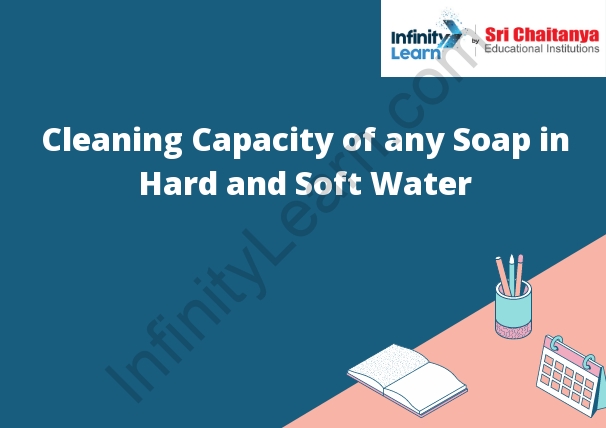cleaning-capacity-of-any-soap-in-hard-and-soft-water
Soaps are amphoteric, meaning they can act as an acid or a base. In hard water, soap combines with calcium and magnesium ions to form insoluble compounds, called scum. In soft water, soap forms soluble compounds with these ions.
The cleaning capacity of soap is reduced in hard water because of the formation of scum. The amount of scum formed is proportional to the concentration of calcium and magnesium ions in the water.

A soap is a substance that is used to cleanse the body. It is a molecule that consists of a hydrophobic (water-hating) tail and a hydrophilic (water-loving) head. The hydrophobic tail is responsible for attaching the soap to dirt and the hydrophilic head is responsible for dissolving in water and cleaning the dirt away. Soaps are effective at cleaning because they form a bilayer where the hydrophobic tails of the soap molecules line up on the inside and the hydrophilic heads line up on the outside. This allows the soap to interact with both the dirt and the water and remove the dirt from the surface.
Soaps are effective at cleaning in both hard and soft water. In hard water, the calcium and magnesium ions interact with the soap and form a scum on the surface. This scum prevents the soap from interacting with the dirt and cleaning the surface. In soft water, the soap is able to interact with the dirt and clean the surface without the formation of a scum.





